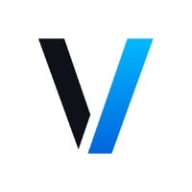

Veracode and ReversingLabs are both prominent in the software security space. Users report better feature satisfaction with Veracode, while ReversingLabs excels in pricing and ease of deployment.
Features: Users appreciate the comprehensive scanning capabilities and integrations of Veracode. ReversingLabs is noted for its advanced threat intelligence and file analysis. Despite this, Veracode's extensive coverage and better integration give it a slight edge in features.
Room for Improvement: Users of Veracode suggest improving scan speed and enhancing detailed reporting. ReversingLabs users point out the need for better documentation and enhanced customer support. Veracode's users focus more on performance, while ReversingLabs' users focus on support infrastructure.
Ease of Deployment and Customer Service: Veracode is praised for its seamless cloud integration and effective customer service. ReversingLabs offers a straightforward deployment but falls short in customer service responsiveness. Although both are easy to deploy, Veracode's superior customer service makes it more favorable.
Pricing and ROI: Veracode is viewed as more costly upfront but provides a stronger ROI due to its extensive capabilities. ReversingLabs is more affordable but offers a slower return on investment. Users find Veracode worth the higher price, while ReversingLabs appeals to those seeking budget-friendly options.
| Product | Market Share (%) |
|---|---|
| Veracode | 7.7% |
| ReversingLabs | 0.4% |
| Other | 91.9% |


| Company Size | Count |
|---|---|
| Small Business | 69 |
| Midsize Enterprise | 43 |
| Large Enterprise | 112 |
ReversingLabs is the trusted authority in software and file security. We provide the modern cybersecurity platform to verify and deliver safe binaries. Trusted by the Fortune 500 and leading cybersecurity vendors, the ReversingLabs Titanium Platform® powers the software supply chain and file security insights, tracking over 35 billion files daily with the ability to deconstruct full software binaries in seconds to minutes. Only ReversingLabs provides that final exam to determine whether a single file or full software binary presents a risk to your organization and your customers.
RL - Trust Delivered.
Veracode is a leading provider of application security solutions, offering tools to identify, mitigate, and prevent vulnerabilities across the software development lifecycle. Its cloud-based platform integrates security into DevOps workflows, helping organizations ensure that their code remains secure and compliant with industry standards.
Veracode supports multiple application security testing types, including static analysis (SAST), dynamic analysis (DAST), software composition analysis (SCA), and manual penetration testing. These tools are designed to help developers detect vulnerabilities early in development while maintaining speed in deployment. Veracode also emphasizes scalability, offering features for enterprises that manage a large number of applications across different teams. Its robust reporting and analytics capabilities allow organizations to continuously monitor their security posture and track progress toward remediation.
What are the key features of Veracode?
What benefits should users consider in Veracode reviews?
Veracode is widely adopted in industries like finance, healthcare, and government, where compliance and security are critical. It helps these organizations maintain strict security standards while enabling rapid development through its integration with Agile and DevOps methodologies.
Veracode helps businesses secure their applications efficiently, ensuring they can deliver safe and compliant software at scale.
We monitor all Application Security Tools reviews to prevent fraudulent reviews and keep review quality high. We do not post reviews by company employees or direct competitors. We validate each review for authenticity via cross-reference with LinkedIn, and personal follow-up with the reviewer when necessary.